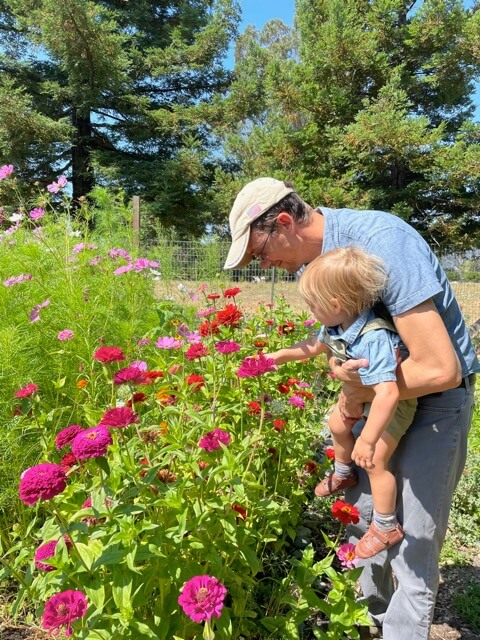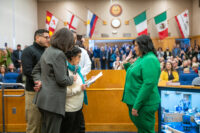By Bonnie Brown | For The Sun —
The first Monarch butterflies have been seen winging their way southward to their eventual over-wintering sites along the California coast. Sonoma Valley is fortunate to be on their flyway.
There is hope that their numbers will be growing each year. The Xerces Society California winter count shows that although they have increased from 2,000 three years ago to 360,000 last year, there has been an overall 90 percent decrease in the last 25 years.
All pollinators, from honey bees, native bees, butterflies, ladybugs, and a host of other insects, are in severe jeopardy from human activity: use of pesticides that kill all insects; increase of mono-crops (vineyards) that have replaced their naturally occurring habitats and food sources of nectar plants; cutting down trees that supply food and nesting sites; climate change; development.
And since one third of all the food we eat and drink must be pollinated by insects, the same human activity that puts pollinators at risk is putting us at risk also.
There are a few steps that each person can take to help these iconic creatures survive and thrive. By creating a swath of pollinator gardens throughout Sonoma Valley, we can make a big difference in their survival. By planting flowering plants that provide nectar, even just a few pots or a half wine barrel, the insects have a place to rest and get nutrients, while pollinating our plants.
Planting native milkweed for Monarch butterflies gives them a place to raise their young. Other butterflies must have certain plants to keep their generations growing. Providing a saucer of a little soil and water gives insects a source of nutrients and hydration.
To learn more and see the plants that provide the habitat that is essential to pollinating insects, visit the Monarch Pollinator Garden at 252 West Spain Street, Sonoma, behind First Congregational Church/Congregation Shir Shalom. The garden is open every Sunday through September from 9am to noon, and is free to all; and the pathway is usable for walkers.
You can see a variety of plants that you may want in your garden. Native plants are especially beneficial for insects. Hand-outs are available with information on organic pest control and native plant nurseries. Visitors can sit in the shade, enjoy the garden and watch bees at work, spot butterflies, talk with the garden manager to share ideas, and explore the shady Redwood Circle.
The garden will again tent-foster a Monarch butterfly so that its transformation can be seen from egg to caterpillar, to chrysalis, to butterfly sometime in September. Free seed packets of annual flowering plants from last year’s garden are given out now, and new seeds from this year’s garden will be ready in October for spring gardens next year. An email sign-up list for our newsletter is at the garden every Sunday morning.
The garden is in partnership with the Valley of the Moon Garden Club and First Congregational Church.






Be First to Comment